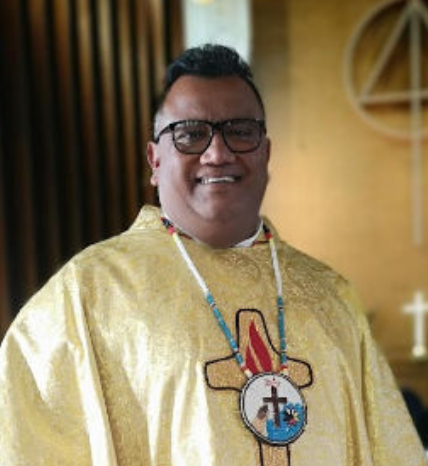
Image by: Austin Pacheco
By: Edmund Laldin
One of the definitions of liturgy is the ‘work of the people.’ It simply means that the liturgy is composed for and by the worshipping community to be relevant and representative of their needs, concerns, thanksgivings, and inspiration for the kingdom of God. All of the above are reflected and presented in the sermon and the prayers of the people.
Some parishes have placed an intercession book in the Narthex for the members to put in their petitions. These petitions can be the names of ill members, for social ministries, and for peace in war-torn areas of the world. Prayers of the people leader integrates the petitions to make them representative of the community. The sermon, or homily, is a monologue and, ultimately, is the prerogative of the preacher. The preacher may decide to reflect on the current issues and struggles of the worshipping community.
However, the preacher can take an expositional approach and, through critical examination, present a compelling and expansive interpretation of the sacred scripture. Both methods will appeal to and speak to some members of the congregation while ultimately isolating others. How a sermon can reflect the intricacies of the congregation and be relational is a topic for another discussion. This essay discusses ways to make liturgy representative of and relevant to the congregation.
Many years ago, a server asked me why we used the Book of Common Prayer (BCP) liturgy. I explained the BCP’s liturgical tradition and heritage to her. We discussed the BCP’s theology, imagery, and language and presented those as the reasons for it being the official prayer book of the Anglican Church of Canada. But she was confused and a bit bored. She asked me why no one speaks this form of English anymore. How can it be relevant if this form of English language is not spoken? If a Caucasian teenager struggled to comprehend the language, how can a New Canadian comprehend the service, fully participate, and own the liturgy? Her question was valid. Inclusivity is crucial in our liturgy. We must ensure that everyone, regardless of their background or language, can understand
and participate in our worship.
The beauty of liturgical churches is the set liturgy celebrated in every church. The BAS has options for the opening sentences, prayers of the people, and the Eucharistic prayers. These options mould the liturgy to reflect the season of the Church’s calendar. Thus, we can say the sentences pertinent to the Lenten season and change them at Easter to celebrate the glorious resurrection of Jesus. These options make liturgy relatable and relevant to the worshippers. However, the ingenuity and unique texture of each congregation is not fully represented in the BCP’s set sentences and prayers.
Many Anglican Churches have made the language accessible, prayers relevant, and sentences pertinent to our pursuit of celebrating contextual liturgy. However, these changes still do not reflect the uniqueness of the gathered community. Music and hymns can help make the liturgy reflect the specificity of the worshipping community. Everyone participates in the hymns – some sing, others tap their feet and hands or close their eyes to listen and reflect on the hymns.
Incidentally, not every music or hymn represents congregational diversity. The Choral tradition with a pipe organ is associated with and presented as the music tradition of the Anglican Church. It might be so in some local parishes. Unfortunately, most local churches have neither the resources nor musical heritage to institute choral traditions as worship music. Also, choral tradition fails to reflect the nature of the congregation. Thus, carefully chosen and enthusiastically sung music and hymns can make the liturgy inclusive and reflective.
Many local churches in Canada utilise different musical instruments. In this diocese, pianos, guitars, drums, harmonica, bass guitars, and other instruments are all used regularly. This variety exhibits parish leadership commitment to engage its members, utilising the local resources and finding the unique musicology of the congregation. In a multi-cultural Canada, this flexibility in worship music allows different cultures and traditions to integrate and make a joyful noise to God.
In conclusion, music and hymns can transform ACC’s congregations from homogenous to heterogeneous communities. Music and the joyful sound can engage every age group, ethnicity and other diversity to live out the image of all God’s children gathered around the table, celebrating and praising God. We want to be inclusive, which is a straightforward statement – to become ‘inclusive’ expects open minds, discerning hearts, and obedience to the Holy Spirit to ensure that all God’s children can sing in the choir.
Edmund Laldin was born and raised in Karachi, Pakistan. Liberation Theology and his father’s ministry were the catalyst for his call to ministry. Edmund Laldin was ordained in 1995 and has served in the dioceses of Quebec, Western Newfoundland, and Rupert’s Land. At present, he is the Incumbent of St. Saviour’s church. His academic interest include Preaching, liturgy, and how to make church accessible to the marginalised.






